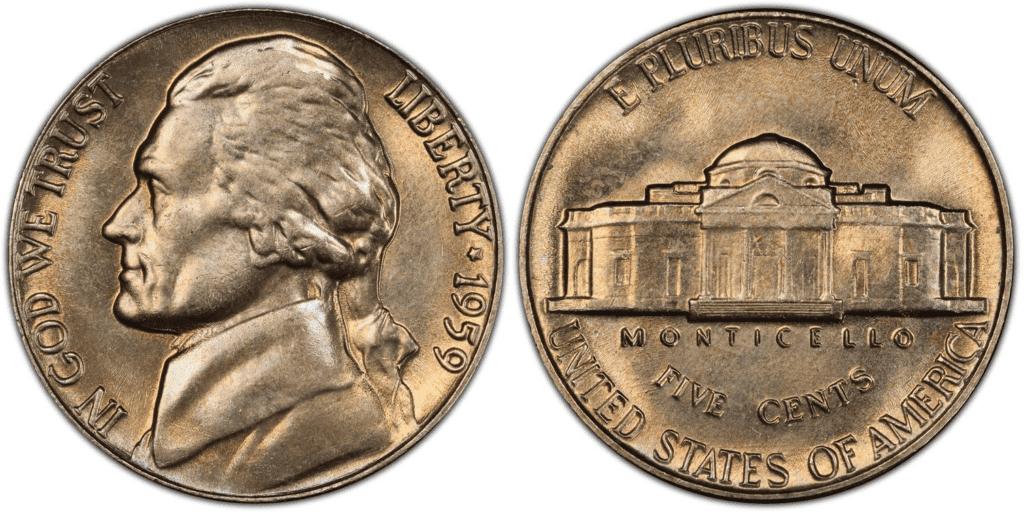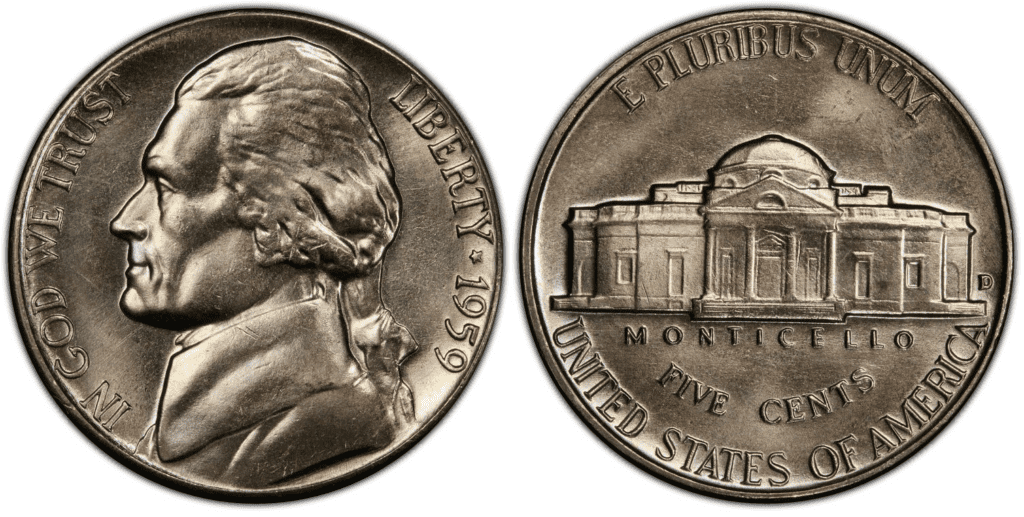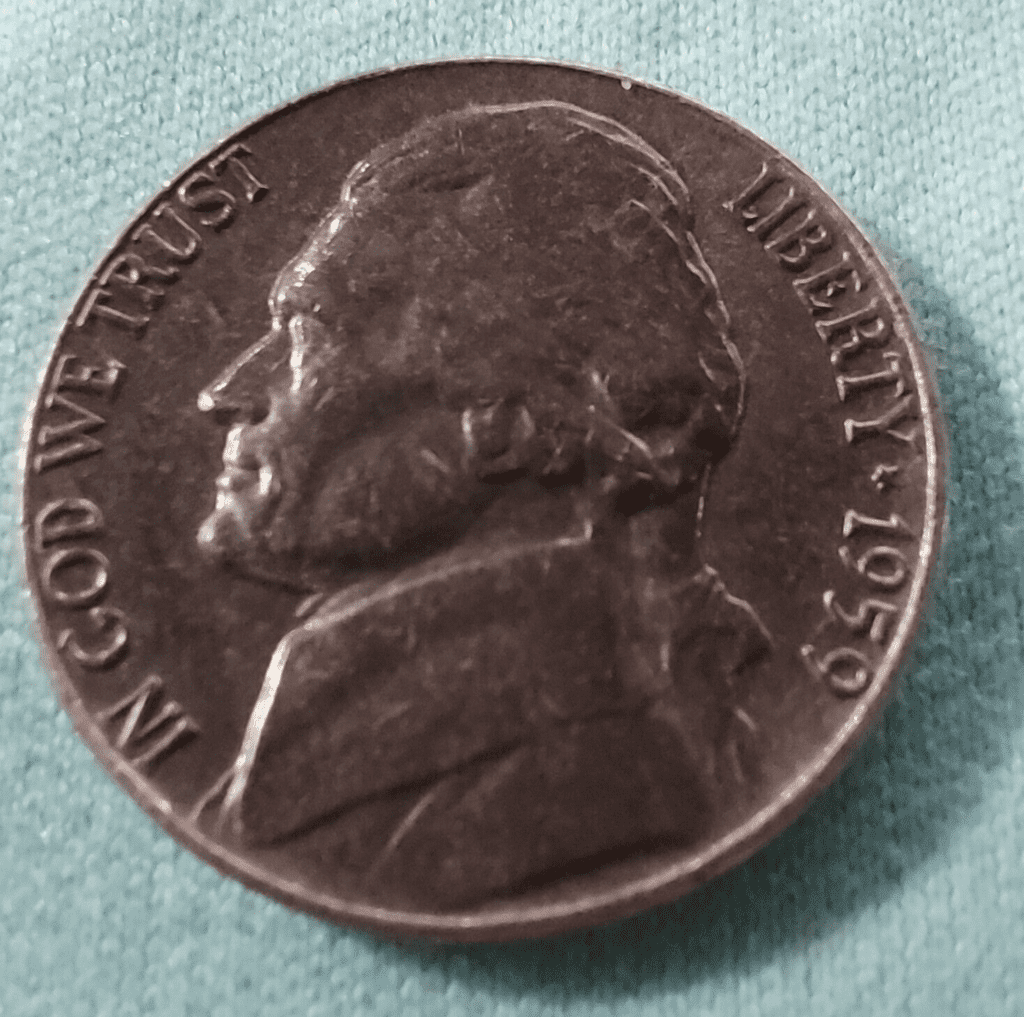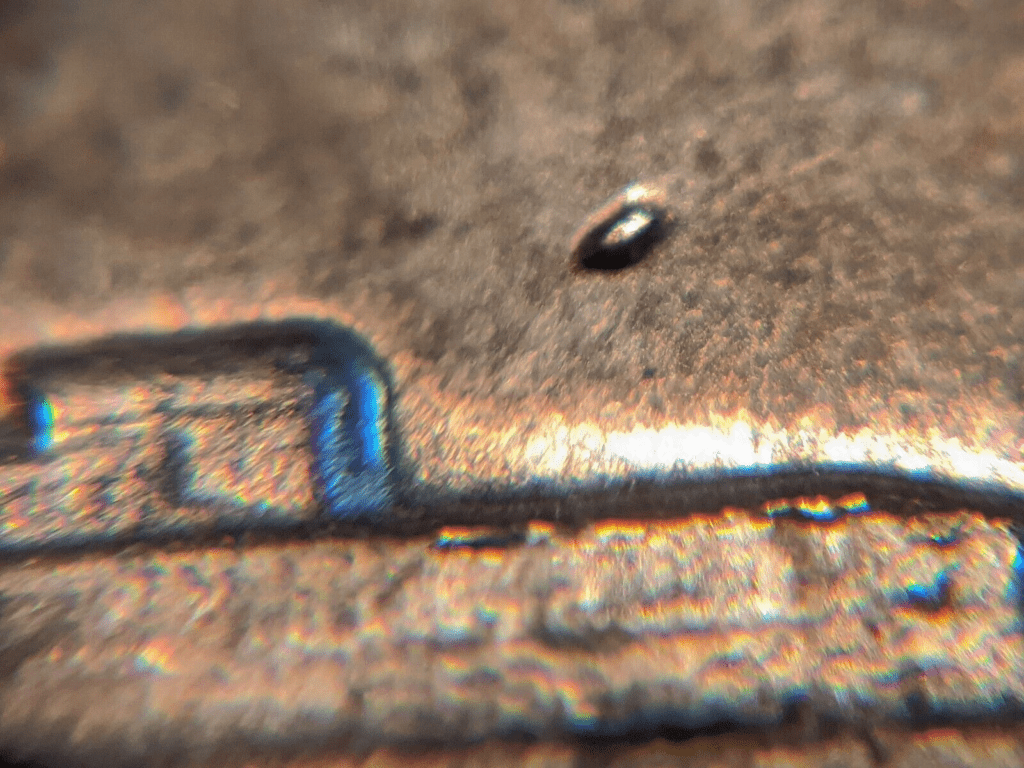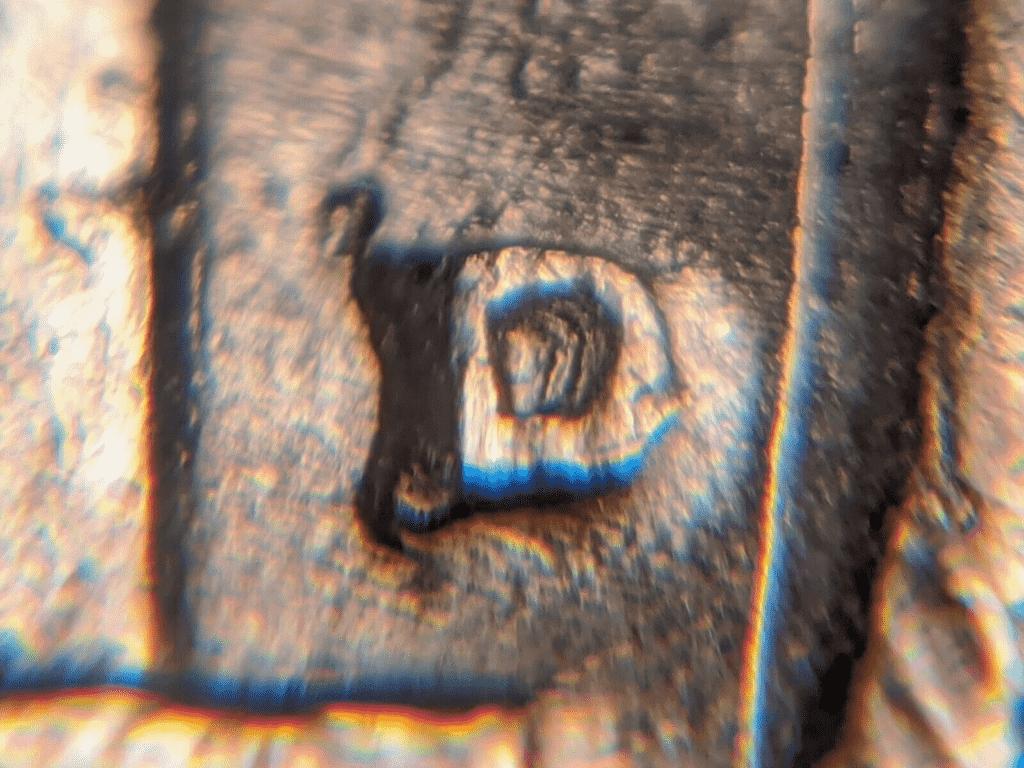What Is the 1959 Jefferson Nickel Made Of?
The 1959 Jefferson nickel is made of 75% copper and 25% nickel. However, the Jefferson nickel isn’t always like this in composition. From mid-1942 to 1945, nickel was made of 56% copper, 25% silver, and 9% manganese. If you remember, these are the years when World War II happened. Thus, the Jefferson nickels were called “Wartime Nickels.”
The US Mint was forced to change the composition of the Jefferson nickel since both copper and nickel were important raw materials used in World War II.
The face value of the 1959 Jefferson nickel is 5 cents. It has a mass of 5 grams, a diameter of 21.21 mm, and a plain edge.
The designer of the Jefferson nickel was Felix Schlag after winning the design competition held by the US Mint. He was born in Germany but later moved to the United States. His initials were supposed to appear on the nickel. However, due to some misunderstanding, the initials were only added in 1966 — almost three decades after the initial release of the nickel coin.

Regarding design, the 1959 nickel obverse features the third president of the United States, Thomas Jefferson. On the left side of the coin reads, “IN GOD WE TRUST,” a famous motto of the US. The right side reads, “LIBERTY,” a principle the Americans deeply value.
On the reverse, you’ll see the front view of the Monticello, which is the mansion owned by Jefferson. Inscriptions include the following:
- PLURIBUS UNUM (Meaning, out of many, one)
- MONTICELLO
- FIVE CENT
- UNITED STATES OF AMERICA
The Jefferson nickel replaced the Buffalo nickel. Unfortunately, the Buffalo nickel was difficult to produce. Although it has a beautiful design, its die can easily break. That was why the US Mint wanted to change the Buffalo nickel, but they couldn’t since they needed to ask Congress for their approval.
However, after 25 years of producing the Buffalo nickel, the US Mint was finally able to replace it with a new design, which in this case, the Jefferson nickel.
1959 Jefferson Nickel Varieties
The 1959 Jefferson Nickel comes with three main varieties: 1959 P Jefferson nickel, 1959 P Jefferson proof nickel, and 1959 D Jefferson nickel.
Aside from the standard varieties of the 1959 Jefferson nickels, some have errors, giving rise to a different type of coin.
Here are the 1959 Jefferson nickel varieties that you should know:
1959 P Jefferson nickel
Edge: Smooth
Mint Mark: No mint mark
Place of minting: Philadelphia
Year of minting: 1959
Face Value: $0.05 (fifty cents)
Price: $0.05 to $22 (or more)
Quantity produced: 27,248,000
Designer: Felix Schlag
Composition: 75% copper and 25% nickel
Mass: 5 grams
Diameter: 21.21 mm
Thickness: 1.95 mm

photo source: PCGS
The 1959-P Jefferson nickel was struck in the Philadelphia Mint, and there were more than 27 million coins. Although there’s no mint mark, and the average price ranges from $0.05 to $22.00, some coins could reach hundreds and even thousands of dollars.
If you are looking for a valuable 1959 P nickel, you need to look for a coin with a “Full Step” grading. This means that looking at the reverse, you can see at leastfive5 steps on Monticello’s stairs.
1959 P Jefferson nickel (proof)
Edge: Smooth
Mint Mark: No mint mark
Place of minting: Philadelphia
Year of minting: 1959
Face Value: $0.05 (fifty cents)
Price: $7 to $55.00 (or more)
Quantity produced: 1,149,291
Designer: Felix Schlag
Composition: 75% copper and 25% nickel
Mass: 5 grams
Diameter: 21.21 mm
Thickness: 1.95 mm

photo source: PCGS
The 1959-P proof Jefferson nickel was also struck in the Philadelphia Mint. At the end of 1959, there were more than 1.6 million P-proof nickel coins.
The mint mark is absent, which is expected for coins struck in the Philadelphia Mint. The average price ranges from $0.05 to $55.00.
Because proof coins are not meant for circulation but for collectors, you will notice that it has low mintage.
Proof coins are more detailed and beautiful. The US Mint separately sells them to coin enthusiasts. The most valuable 1959 nickel coins are the proof coins with Cameo and Deep Cameo ratings.
1959 D Jefferson nickel
Edge: Smooth
Mint Mark: D
Place of minting: Denver
Year of minting: 1959
Face Value: $0.05 (fifty cents)
Price: $8 to $16.00 (or more)
Quantity produced: 160,738,240
Designer: Felix Schlag
Composition: 75% copper and 25% nickel
Mass: 5 grams
Diameter: 21.21 mm
Thickness: 1.95 mm

photo source: PCGS
The 1959-D proof Jefferson nickel was struck in the Denver Mint. You’ll find the “D” mint mark between the right side of the Monticello and the edge of the coin. The average price ranges from $0.05 to $16.00. There were more than 160 million 1959 Denver nickels, making it the most abundant variety among the other types.
The 1959-D Jefferson nickel is known to be weakly struck. This means that most coins in this series feature not-so-detailed engraved elements. Most coins even have a lot of scratches and nicks. So, if you find a 1959 nickel with a grade of at least MS 65 and Full Steps rating, then you can be sure that that coin is rare. But, on the other hand, it could sell for thousands of dollars.
List Of 1959 Jefferson Nickel Errors
With more than 189 million copies, the 1959 Jefferson nickel couldn’t escape the fact that coins could have errors. That’s why, like any other coin series, the 1959 nickels have their fair share of error coins.
Now, errors can happen during the cutting of the planchet and striking the coin. In addition, errors can occur due to mechanical or human error.
One example of a 1959 Jefferson nickel error is the improperly annealed coin. In this error, the pure metal molecules are said to migrate on the coin’s surface, causing discoloration. That’s why you’ll find improperly annealed coins as dark or blackish.
Here’s an example:

photo source: eBay
Sometimes, there’s a foreign material that comes between the die and planchet. So, when the die strikes through the foreign material, the die leaves an unexpected mark on the coin.
Here’s an example:

photo source: eBay
The image above is a UFO-like mark above the Monticello mansion.
Another example is when the mint mark is punched twice. This is called the re-punched mark (RPM) error.
Here’s how it looks:

photo source: eBay
Mint marks are struck separately from the whole die. So, for example, in the Denver Mint, they add this mint mark.
Aside from the errors mentioned above, errors can be off-center strikes, weak strikes, double die strikes, clipped or folded planchets, and others.
How Much Is 1959 Jefferson Nickel Worth Today?
The 1959 Jefferson nickel is worth $0.05, which is what its face value suggests. However, its melt value is slightly higher, which is $0.0645.
Nevertheless, there are still 1959 Jefferson nickels with an astronomically higher value than their face value or melt value.
Here is a 1959 Jefferson Nickel values chart to help you better understand its prices:
| Coin | Condition | Grade | Mintage | Value |
| 1959 P Jefferson Nickel | Circulated/mint | Not graded | 27,248,000 | $0.05 to $22 |
| 1959 P Jefferson Nickel | Uncirculated/mint | MS-65 | 27,248,000 | $8 to $36 |
| 1959 P Jefferson Nickel | Uncirculated/mint | MS-67 | 27,248,000 | $15 to $127 |
| 1959 P Jefferson Nickel | Uncirculated/mint | MS-67 | 27,248,000 | $94 to $353 |
| 1959 P Jefferson Nickel (Proof) | Uncirculated/proof | Not graded | 1,149,291 | $7 to $55.00 |
| 1959 P Jefferson Nickel (Proof) | Uncirculated/proof | MS-67 | 1,149,291 | $11 to $26 |
| 1959 P Jefferson Nickel (Proof) | Uncirculated/proof | MS-68 | 1,149,291 | $28 to $736 |
| 1959 P Jefferson Nickel (Proof) | Uncirculated/proof | MS-69 | 1,149,291 | $37 to $105 |
| 1959 D Jefferson Nickel | Circulated/mint | Not graded | 160,738,240 | $8 to $16.00 |
| 1959 D Jefferson Nickel | Uncirculated/mint | MS-65 | 160,738,240 | $9 to $26 |
| 1959 D Jefferson Nickel | Uncirculated/mint | MS-66 | 160,738,240 | $11 to $84 |
| 1959 D Jefferson Nickel | Uncirculated/mint | MS-67 | 160,738,240 | $178 to $846 |
As you can see, some 1959 nickels are just more valuable than others. According to PCGS, the auction record for a 1959 P nickel is $9,694. It was a coin with a grade of MS67FS, sold on October 26, 2017, by Legend Rare Coin Auctions.
For the 1959 P proof nickel, the auction record is $8,400. It has a coin grade PR69DCAM sold by Stack’s Bowers on August 25, 2021. Finally, for the 1959 D nickel, the auction record is $3,910. It was a coin with a grade of MS66 sold by Bowers & Merena.
How Does The Grading System Work?
The Sheldon Scale is used by numismatists to provide a numerical value to coins. The Sheldon Scale goes from poor (P-1) to perfect mint state (P-1) (MS-70). Coins were originally evaluated using words to reflect their condition (Good, Fair, Excellent, Etc.). Unfortunately, coin collectors and dealers had different ideas about what each of these terms represent.
Professional numismatists joined together in the 1970s and established CoinGrading standards. These numismatists now assign grades at key places on the seventy-point scale, using the most regularly utilized numeric points in conjunction with the original adjective grade. The following are the most common coin grades:
-
-
- (P-1) Poor – Indistinguishable and probably damaged; if used, must have a date and mintmark; otherwise, rather battered.
- (FR-2) Fair – Nearly smooth, but without the damage that a coin graded Poor often possesses. The coin must have enough detail to be identified.
- (G-4) Fair – Inscriptions have merged into the rims in some areas, and important elements have been mostly erased.
- (VG-8) Very Good- A little weathered, but all of the primary design elements are visible, albeit faintly. There is little if any, central detail left.
- (F-12) Good – The item is very worn, yet the wear is even, and the overall design details stand out clearly. Rims are almost completely isolated from the field.
- (VF-20) Very Fine – Moderately weathered, with some finer features still visible. The motto or all letters of LIBERTY are readable. Both sides of the coin have entire rims that are separated from the field.
- (EF-40) Extremely Fine – Gently used; all gadgets are visible, and the most important ones are bold. The finer details are bold and clear, however, light wear may be seen.
- (AU-50) Uncirculated – Slight evidence of wear on the coin’s design’s high points; may have contact marks; eye appeal should be adequate.
- (AU-58) Uncirculated Choice – Slight traces of wear, no severe contact marks, almost full mint shine, and great eye appeal.
- (MS-60) Mint State Basal – Strictly uncirculated; no indication of wear on the coin’s highest points, but an unsightly coin with reduced luster, visible contact marks, hairlines, and other flaws.
- (MS-63) Mint State Acceptable – Uncirculated, but with contact scratches and nicks, little reduced shine, but otherwise appealing appearance. The strike is weak to average.
- (MS-65) Mint State Choice – Uncirculated with great mint shine, very little contact blemishes, and exceptional eye appeal. The strike is unusually severe.
- (MS-68) Mint State Premium Quality – Uncirculated with superb luster, no obvious contact marks to the naked eye, and exceptional eye appeal. The strike is quick and appealing.
- (MS-69) Almost Perfect Mint State – Uncirculated with perfect brilliance, a sharp and appealing strike, and extremely good eye appeal. A near-perfect coin with minor imperfections in the planchet, strike, and contact markings (seen only under 8x magnification).
- (MS-70) Mint State Perfect – Under 8x magnification, there are no tiny imperfections discernible; the strike is crisp, and the coin is perfectly centered on a beautiful planchet. Rarely seen on a coin, this coin is bright and whole, with original luster and exceptional eye appeal.
-
Where To Buy Or Sell 1959 Jefferson Nickel?
The 1959 Jefferson nickel should be readily available online and in offline stores. You can immediately head to eBay or Amazon. These online platforms allow you to both sell and buy Jefferson nickels.
You can also do a Google search and use keywords such as “buy 1959 Jefferson nickels” or “sell 1959 Jefferson nickels.” You should then instantly get a list of good results.
Aside from the Internet, the best place to find rare coins would be in auctions. Some of the most expensive and rarest coins are sold in auction houses.
Moreover, coin shops, antique stores, pawnshops, and collector’s hubs should also be good places to buy and sell 1959 Jefferson nickels.
FAQs
How do I know if I have a 1959 black beauty nickel?
You can check a normal-looking nickel and compare it to a 1959 black beauty nickel. As its name suggests, a 1959 black beauty nickel should look considerably darker than the usual nickel.
Is there a 1959 Jefferson Nickel worth $6000?
Yes, some 1959 Jefferson nickels are worth $6,000.Typically, these nickels are the ones with high grades. If it is in MS state, look for a coin with Full Steps rating. For PR, look for coins that have a Deep Cameo rating. Coins with these grades are worth thousands of dollars.
Where is the mint mark on a 1959 nickel located?
The mint mark on a 1959 nickel is on the coin’s reverse side. It is located between the right side of the Monticello mansion and the edge. Coins struck in the Philadelphia Mint don’t have a mint mark.

